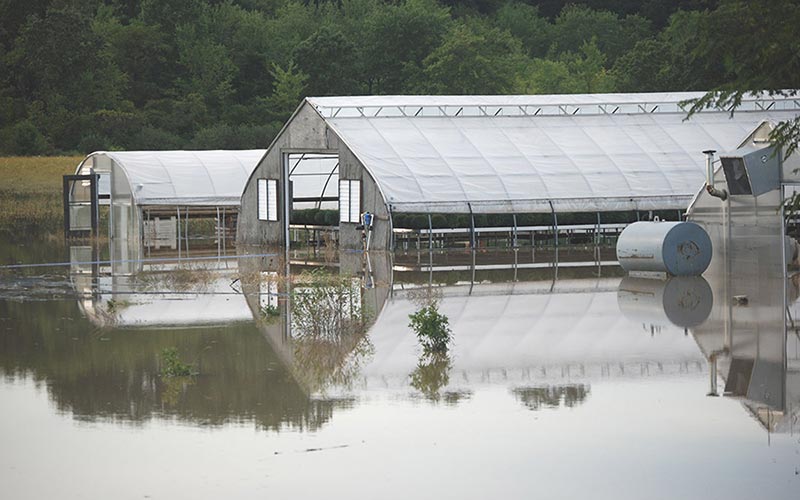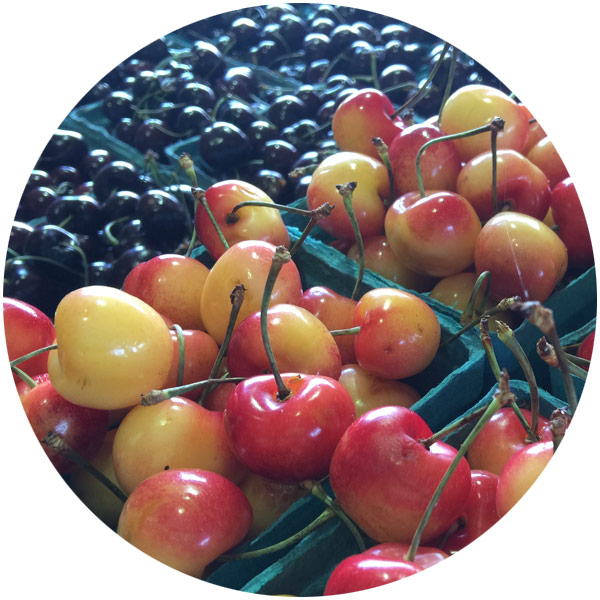Home > Climate News >
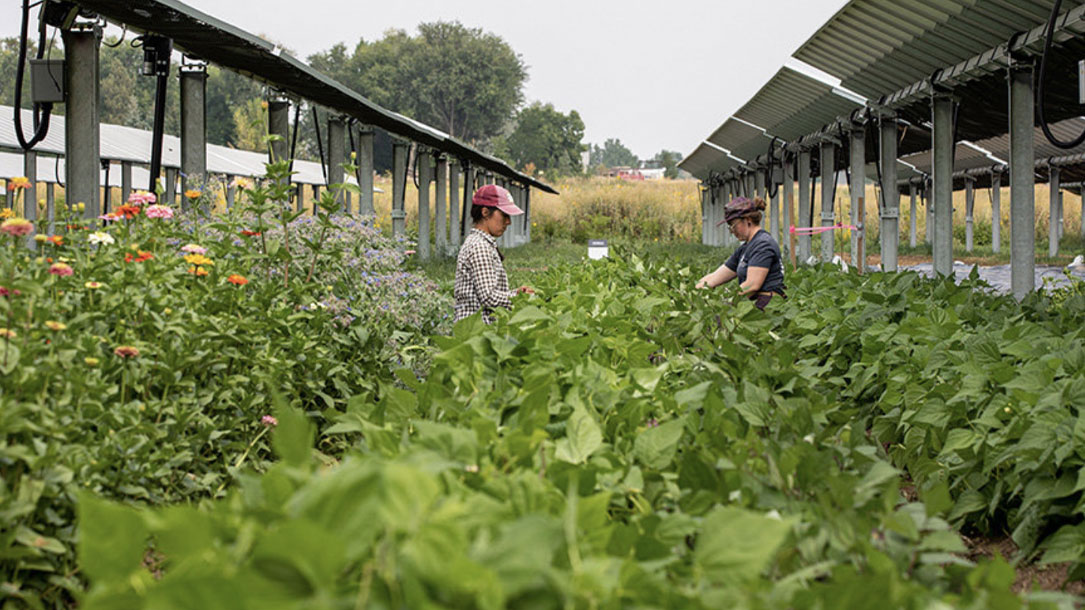
The future of farming?
Large solar arrays have begun to line the Wallkill Valley landscape. Solar farms are springing to life where agriculture — and in one case a miniature golf course — once ruled the land.
But what if a farmer wanted to continue to grow crops on a farm and was able to plant and grow them underneath solar panels that alternately allowed for shade and sunlight for the crops? What if the farmer could lease space to the provider of solar energy and earn additional income while continuing to operate the farm?
This concept, known as agrivoltaics, is catching on. It could soon come to the Town of Montgomery, provided a change in the town’s solar laws is approved…
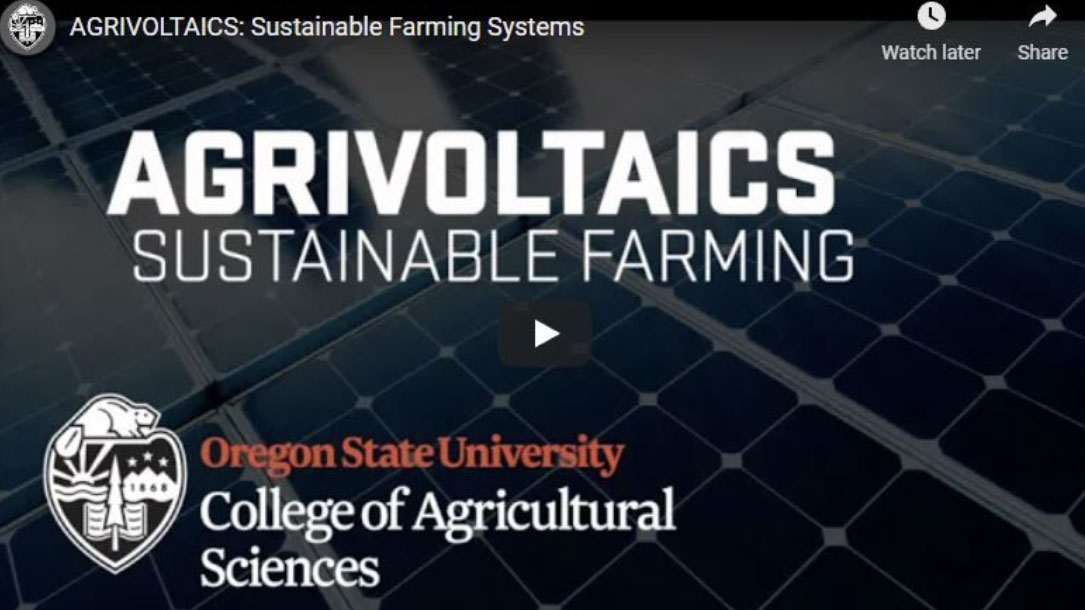
Sustainable farm agrivoltaic project
Solar panels can be positioned to allow plants just the right amount of sunlight, and then the excess sunlight can be harvested for electricity — and produce more than they would without crops below them.
That’s right. Plants help keep the solar panels cool, which makes them more productive. Our studies have shown that panels positioned above plants produce up to 10% more electricity.
Agrivoltaics is a symbiotic relationship where both the solar panels and the crops benefit because they help each other perform better.

Farming collaborative plan looks to keep land accessible, open
Under the land collaborative model, the property will not solely be devoted to agriculture; Sanford-Long’s animals will share land with a planned solar array…
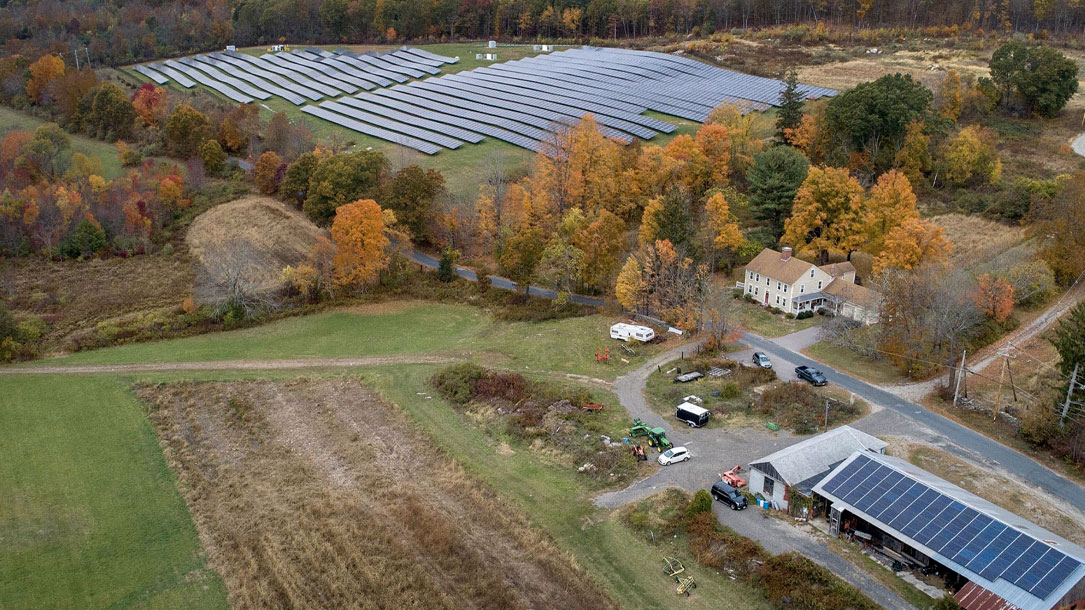
Farms will harvest food and the sun, as Mass. pioneers ‘dual-use’ solar
Paul Knowlton owns 300 acres of land in Grafton, and farms about 50. The farm has been in his family for five generation, ever since Knowlton’s great-great-grandfather settled in the Blackstone Valley in 1872.
These days Knowlton grows pumpkins, squash and corn. Up a gravel road, past the family cemetery, corn stalks are still standing from this year’s crop. “Considering the drought situation, we did fair,” Knowlton says.
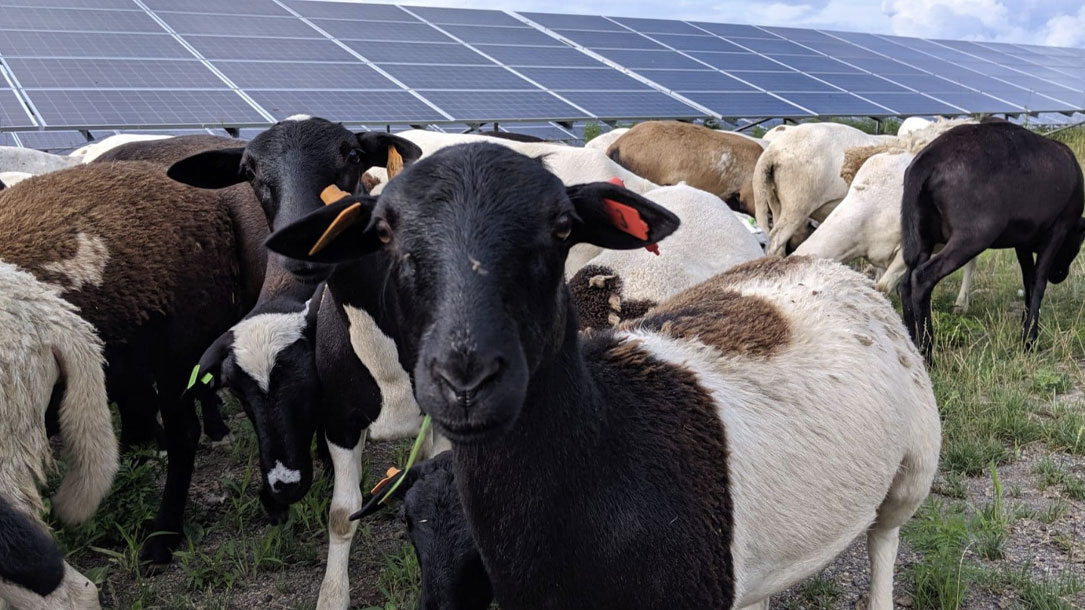
Solar meets sheep (and bees, and more)
Often solar panels sit on former agricultural land, but aren’t what we’d otherwise think of as a farm.
Agrivoltaics aims to change that by hosting PV panels and agriculture on the exact same land. Often, livestock like sheep graze under the solar panels. Sometimes the projects include pollinator habitat as well, which can benefit biodiversity, honey production, or adjacent pollinator-dependent crops. And trials are being done growing shaded crops under raised panels, too…
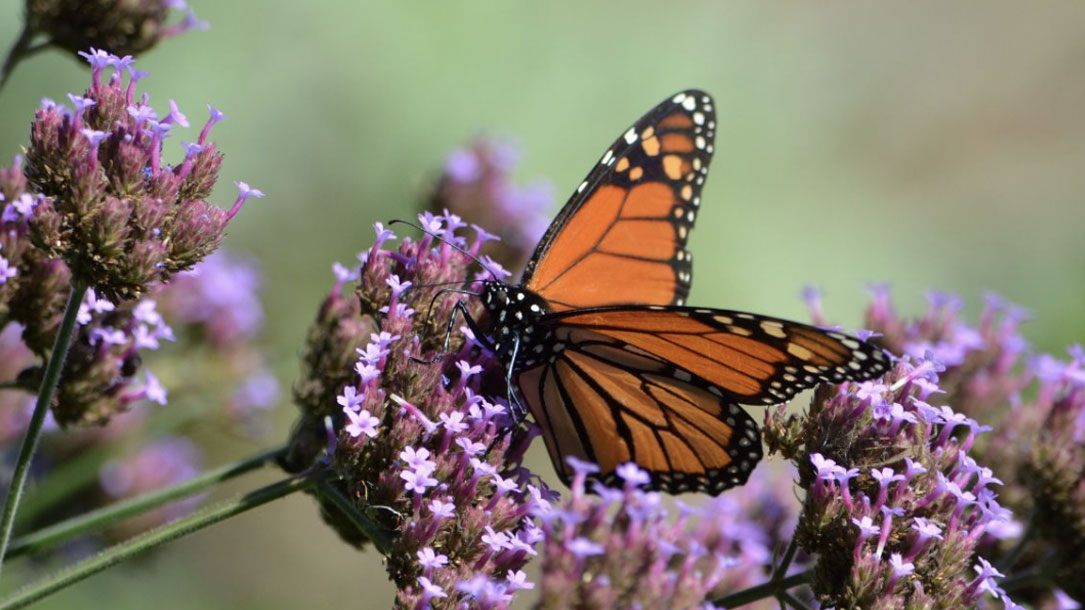
Research shows solar habitat installations support pollinators
Join Monarch Joint Venture, Connexus Energy, MNL, and Fresh Energy for a free webinar where they dig into the new study, “Monitoring Pollinators on Minnesota Solar Installation,” which used field data collection practices to document an abundance of bees, butterflies, moths, flies, and wasps utilizing pollinator-friendly solar habitat in Minnesota. We’ll also discuss seed mixes and biodiversity benefits, how utilities and co-ops can lead, and more.
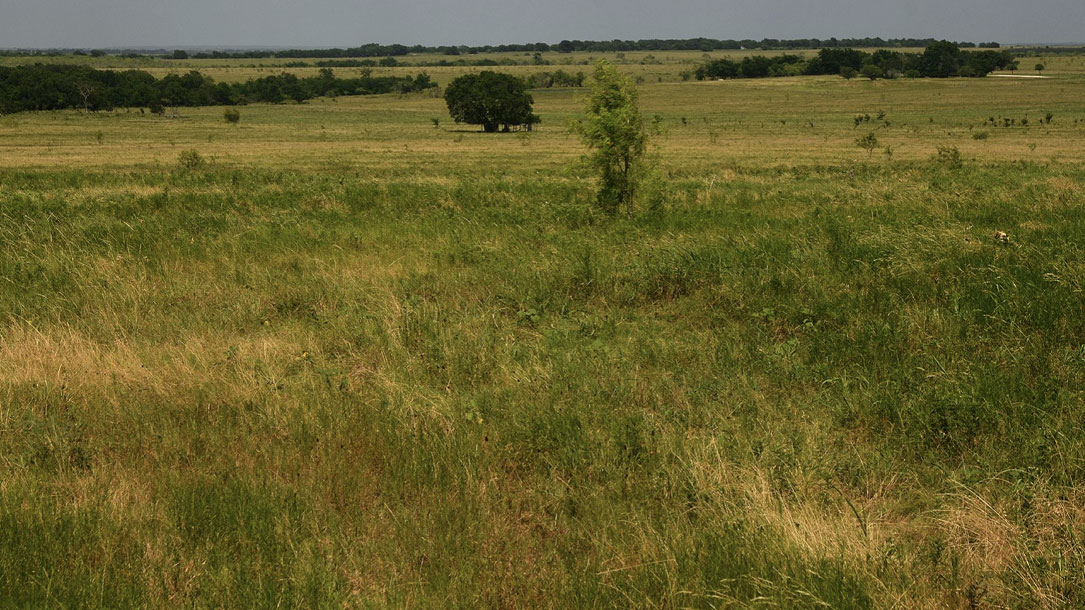
Development by design: Mitigating wind development’s impacts on wildlife in Kansas
Wind energy, if improperly sited, can impact wildlife through direct mortality and habitat loss and fragmentation, in contrast to its environmental benefits in the areas of greenhouse gas, air quality, and water quality. Fortunately, risks to wildlife from wind energy may be alleviated through proper siting and mitigation offsets. Here we identify areas in Kansas where wind development is incompatible with conservation, areas where wind development may proceed but with compensatory mitigation for impacts, and areas where development could proceed without the need for compensatory mitigation.
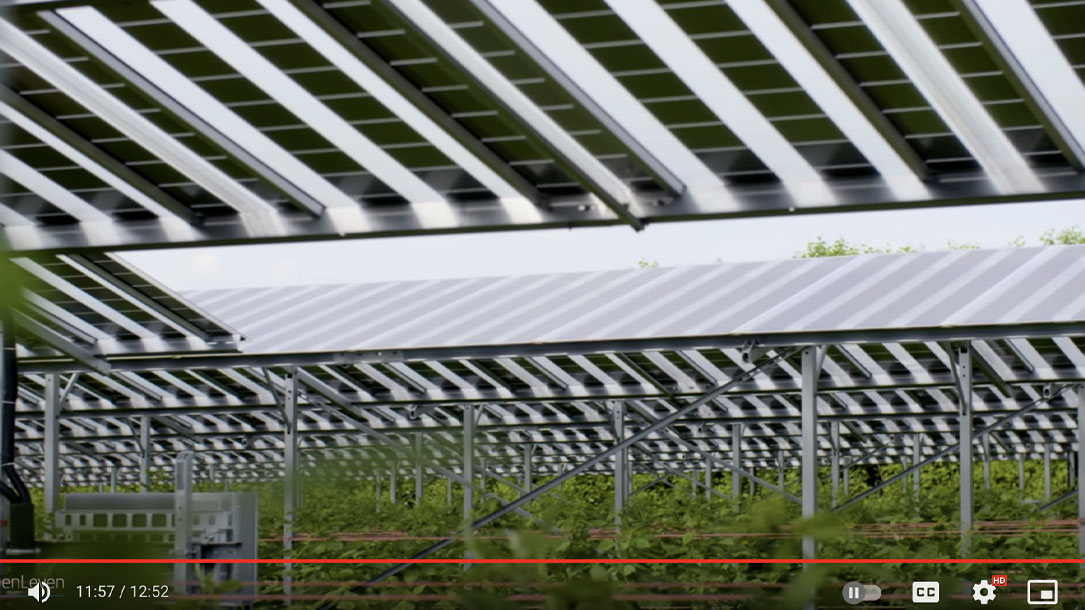
Friday Feature: Agrivoltaics — farming under solar panels
With the push to seek alternative energy sources, solar farms are buying up farm land. Agrivoltaics is the combination of the two, so the land is not lost for food production. There are benefits to partial shade for crop production, such as lower irrigation requirements. The trick is to find the right mix to have both productive crop production and also adequate solar energy production. There are research projects in Colorado, Arizona, and Oregon to evaluate this opportunity that is already being utilized to some extent in Europe.
Check out the pros and cons of combining farming with solar installations…
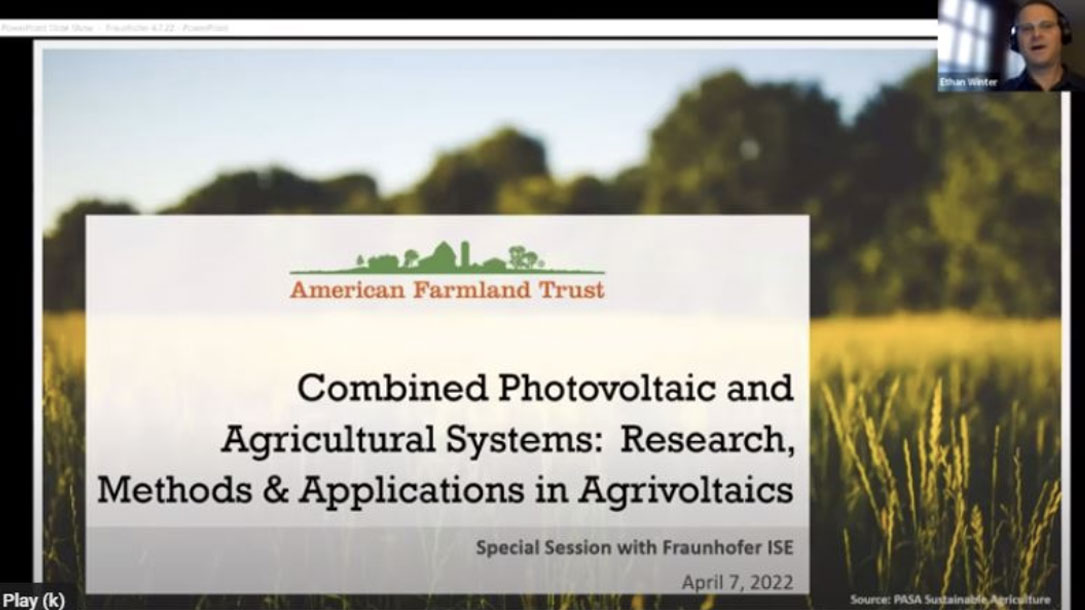
Solar that supports farmers, soils, water
While states and communities around the U.S. are ramping up renewable energy commitments and incentivizing solar development, many farms are struggling. There is also growing concern that solar development could displace active agricultural use on productive farmland, with impacts to farm renters, local economies, and regional food systems. Without an integrated approach, achieving clean energy goals may come at the loss of some of our most fertile and economically viable farmland to solar development.
American Farmland Trust seeks a more collaborative and sustainable path forward towards a clean energy transition that supports healthy soils, wholesome food, and vibrant farms…
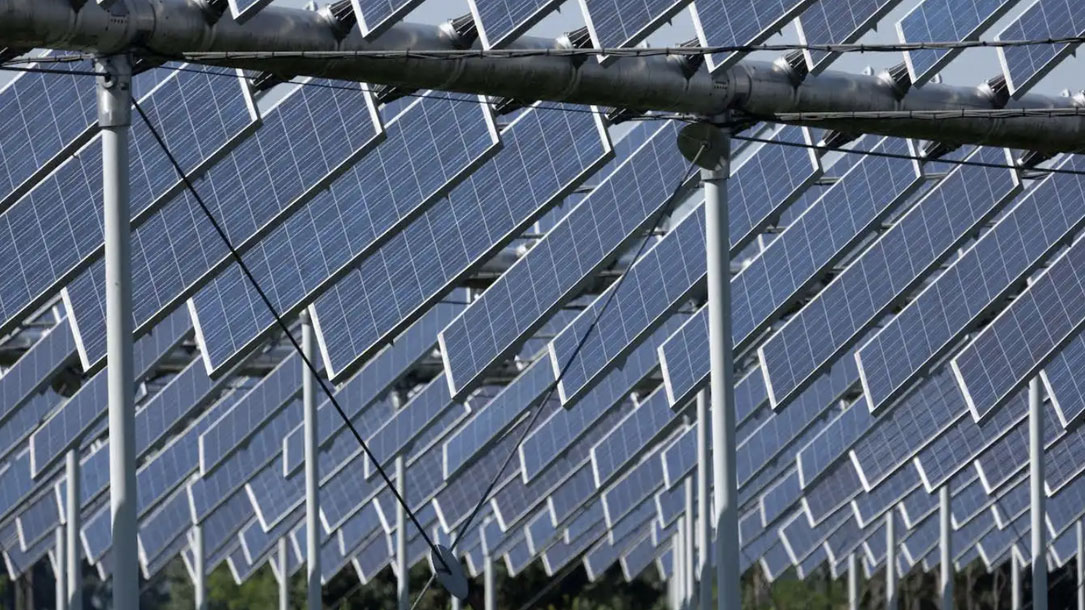
Growing plants — and providing solar energy
Access to fresh food is already a problem in many countries, and will likely get worse with more mouths to feed. This is where the concept of agrivoltaics could create a massive change. This farming setup mixes water, energy, and plant growth all in one space. Solar panels collect energy from the sun’s rays; underneath those panels is where the plants grow. The setup takes less water than the traditional way of farming, all-in-all creating a more sustainable way to grow food and create energy.
Joining Ira to talk about the promise of agrivoltaics is Dr. Chad Higgins, associate professor of biological and ecological engineering at Oregon State University, in Corvallis, Oregon.

